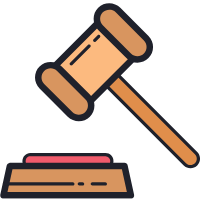Examples Of Shared Liability In Auto Accidents
In a two-car accident, the authorities might find both drivers liable for the damages. Here are a few examples of shared liability in auto accidents.
Speeding
Speeding can mean either driving over the speed limit or driving too fast for the prevailing conditions. For example, motorists should slow down in poor visibility or on bad roads. Any driver who fails to do that might be liable for the ensuing accident. The liability might hold even if the other party is to blame too.
Consider a case where visibility is poor, and you are driving too fast for the conditions. You can easily crash into the back of a stopped car. You won't have time to stop by the time you notice the car. Both of you might be liable for the crash. The driver's liability will be for stopping their car in the middle of the road. Your liability will be for driving too fast for the conditions.
Distraction
Distractions can cause car accidents. Distractions also make it difficult to avoid accidents other people might cause. For example, if a driver loses control of their car and veers into your lane, you might get out of the way and avoid a crash if you are an attentive driver.
However, in a similar scenario, a crash is almost inevitable if your phone distracts you. Any court that hears the facts of the case won't fail to hold you partially liable for the crash.
Riding With a Dangerous Driver
If you get into a car with a driver you know to be dangerous, then you are partly to blame if you end up in an auto accident. Consider a case where you knowingly get into a car with an intoxicated driver. Five minutes later, the driver crashes into a railing.
Many people will blame the driver, and rightly so, for driving while intoxicated. However, you are also to blame for getting into a car with an intoxicated driver.
Driving a Defective Car
Car defects cause or contribute to accidents all the time. Worn tires, defective brakes, and malfunctioning lights can all lead to collisions. Some defects also make it difficult for drivers to avoid collisions with other road users.
Consider an example of a foggy road where drivers can barely see each other. Assuming one driver loses control over their car and crashes into another car. You might assume that the rear driver is obviously to blame for the crash. However, the driver in front might also be to blame if their tale and brake lights are malfunctioning.
If you've been in an auto accident, no matter whose fault it was, consider finding auto accident attorneys in your area.
Share
